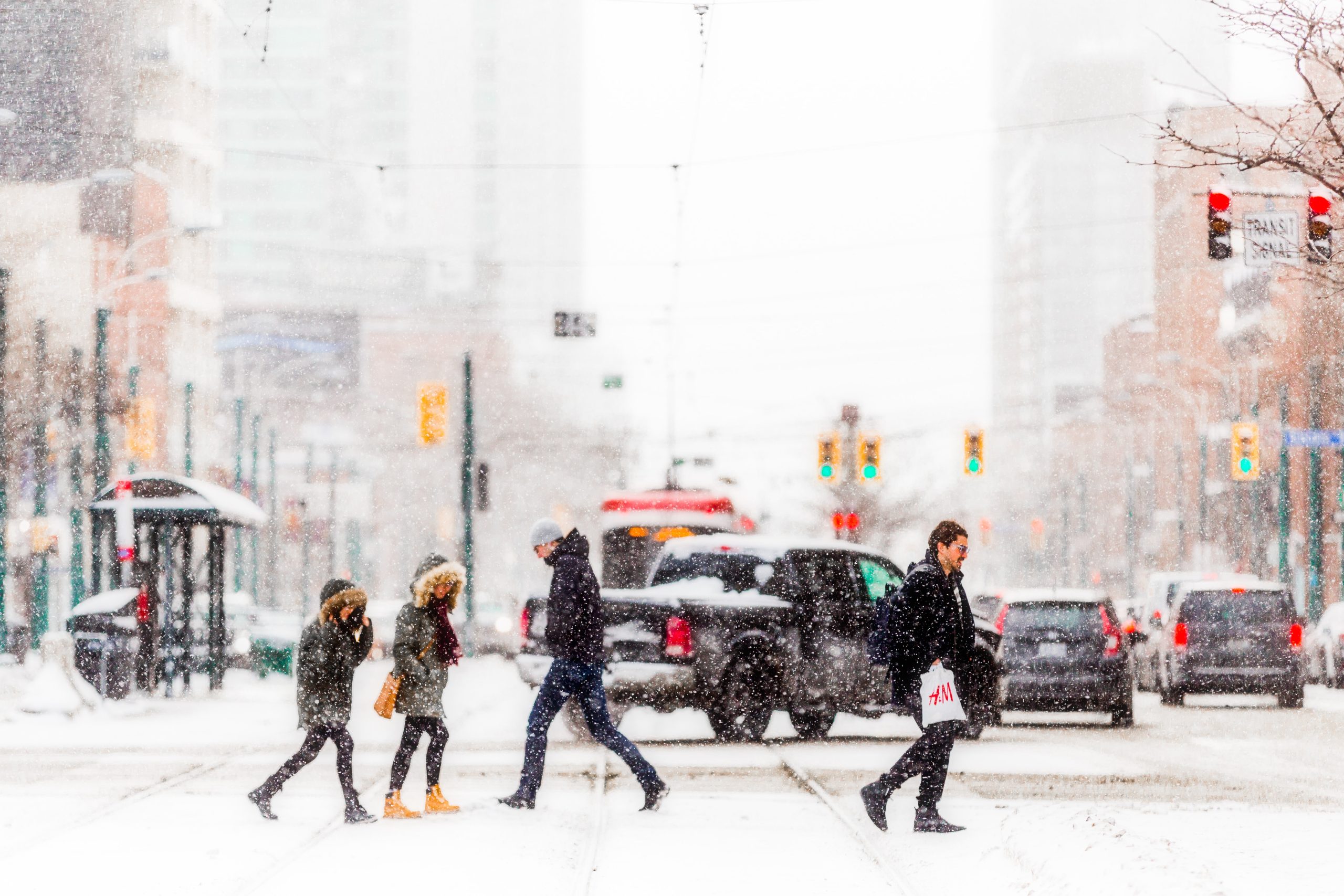Infra
How ‘magical’ Bentway linear park put Toronto on road to regeneration

On the coldest day in Toronto’s recorded history, thousands of people shivered under a crumbling and despised elevated highway that carves through the centre of Canada’s largest city.
They were told that within shadows cast by hulking concrete pillars, a “magical” space would take shape. Organizers of the project envisioned a skating trail in the winter, with farmers’ markets, concerts and artistic showcases drawing crowds in warmer months.
A 175,000-square-foot patchwork of vacant lands and former parking lots would be sewn together into what became known as the Bentway, a linear park meant to both address the dearth of public space and to rethink the long-maligned Gardiner Expressway that reaches across the city.
Six years later and well into the second stage of development, the Bentway has proved an unlikely success in a city desperate for imaginative uses of urban space.
“The naysayers asked who would want to spend time under a highway,” said David Carey, a co-director of the project. But on the first weekend in 2018, 20,000 people showed up to use the space. “Since those early days, we’ve become a symbol of urban optimism. It’s really an idea that Toronto can dream big and that we can do great, great things together.”
On a recent summer morning, 2,000 people lined up under the Bentway to attend an in-person session with Adriene Mishler, an immensely popular yoga practitioner with more than 12 million followers online. Tickets for the event, which was held in a large field beside the highway, sold out in less than 12 minutes, according to organizers.
“It was so exciting and had this exhilarating, concert-like vibe,” said resident Marjie Chud, who was among the first in line. Also waiting for the event were people who had flown in from Saskatchewan, Manitoba and the US state of Maine.
Throughout the hour, Mishler led the yoga session, emphasizing the togetherness and sense of community created by thousands moving and breathing in unison, against the muffled rumble of cars.
“Experiencing the silence, with nature around you and everyone coming together – people in Toronto are always so busy walking and wandering – was something special,” said Chud. “To just pause for a minute – together – is really powerful.”
Mishler’s event was part of the Bentway’s summer program highlighting a “softer city” and reflects an effort to reshape how people think about their surroundings, especially the daunting cement landscape of downtown Toronto.
“Modern cities are often thought of as hard, fast-paced, and alienating places,” the Bentway organizers wrote, following a report that found Toronto is one of the “loneliest places” in the country. “Not just because of the concrete and steel that built them, but with social isolation on the rise, cities are becoming increasingly hard places to live.”
The Gardiner Expressway slices a harsh line through Toronto, separating the city from its waterfront and offering visitors and residents a stark reminder of the legacy and longevity of narrow-minded urban design.
“The Gardiner is one of these mid-century pieces of infrastructure that was built with mid-century ideals when cities all across North America, were building mega-highways with a real sense of triumph,” said Carey. “It was even advertised at the time as Toronto’s ‘beautiful’ waterfront highway.”
But as the city expanded and the waterfront district transformed from the site of heavy industry to a residential area to accommodate a surge in population, the highway became an unmistakable blight.
“While it continues as an active highway above, it’s become an obstacle to those on the street,” said Carey. “The area should be a front door to our waterfront, but it feels more like a gauntlet you have to pass through.”
Debate over the future of the highway has mostly focused on two possible outcomes: tear it down completely or keep pouring billions into it for much-needed repairs. But Carey said more imaginative visions should be considered.
“We need to stop thinking in this binary way and explore different options,” he said.
Initial development of the Bentway came after a C$25m (US$18m) donation from urban planner Judy Matthews and her husband Wilmot, an investment banker, one of the largest donations in the city’s history for a public space.
The space was tentatively called Project: Under Gardiner but libraries, schools and community organizations hosted events to help select an official name. Among the 800 contenders: The Artery, The Bentway, The Canopy and The Gathering Place. Shark Park, immensely popular with students, did not make the final round.
The Bentway takes inspiration from New York’s acclaimed High Line, the reclaimed rail spur that has since been transformed into an elevated walking corridor.
But author Shawn Micallef, suggested other comparisons: the sports fields under London’s Westway as well as the shops and nightclubs beneath railway arches.
“In a city like Toronto that doesn’t have enough parks, creating linear public spaces like this is an innovative way to create space without huge amounts of capital required to purchase property outright, but also take people on a bit of a journey through their city,” said Micallef. “It’s a new way of thinking about urban public spaces. The Gardiner Expressway may be Toronto’s albatross but the Bentway has done a great thing with something that isn’t going anywhere.”
Toronto’s rapid population growth and years of austerity have created a mounting tension within the city and led to a recent guerrilla art project that poked fun at the grim state of infrastructure. Seemingly small-stakes city council battles over consuming alcohol in parks or the lack of public toilets have bred a mounting “urban pessimism” among residents.
“But if we can transform something seen as ugly, something that’s a barrier and obstacle and turn into something beautiful, something beloved, that’s the beacon Toronto needs right now,” said Carey. “Because once you see what something can be, the beauty is that you can’t unsee it.”









